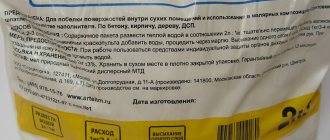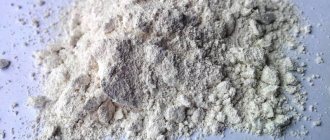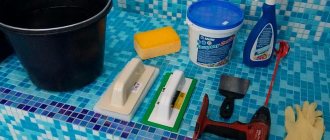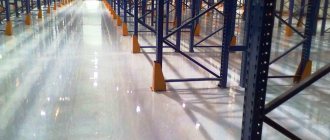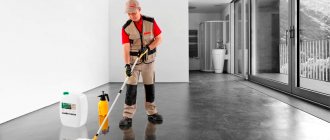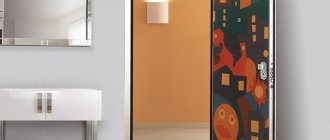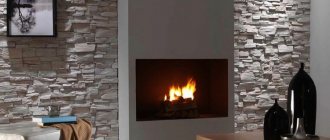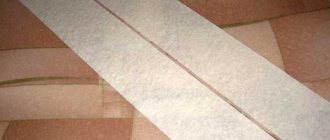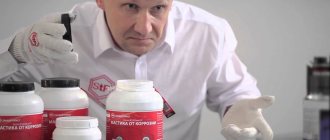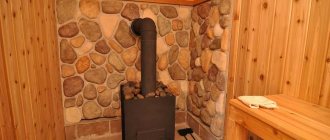Why is it necessary to whiten the stove?
According to traditions in Rus', stoves in villages were whitened to protect against the evil eye and misfortunes. It is a big sin if the stove is dirty or has any drawings on it. That's why people painted white. In addition, it was possible to carry out the plan only on certain days and on a waxing moon.
Nowadays, of course, they no longer pay attention to such features and can paint the stove in any color or draw attractive images. At the same time, they still continue to adhere to traditional rules and use whitewash for the stove.
The advantages of this method are as follows:
- quality of the material;
- ease of application;
- attractiveness of the coating;
- low cost of material.
The only drawback that stands out is the constant updating. As a rule, it is carried out 1-2 times a year as needed.
How can you whiten a stove?
Knowing how to whiten a stove, you can avoid further troubles, such as premature shedding of the material or its unsuitability for such work.
Lime
Lime is formed by annealing mountain limestone in mines. By adding water to the resulting solution, a white color is obtained, which is used for construction purposes. This whitewashing method is especially often used in the bathhouse.
The advantages of this method are as follows:
- inexpensive cost of materials;
- the solution has antimicrobial and moisture-resistant properties;
- can be applied to the old layer.
Important! Lime is an alkali, so precautions should be taken when using it.
Shpakril
Putty is a paste for interior work. The only disadvantages include the high cost of the material. At the same time, it has a lot of advantages:
- moisture-resistant material;
- Sold ready-made, all you have to do is add water;
- characterized by increased whiteness;
- the surface will not get dirty;
- small cracks are covered.
Chalk is a natural material that is easily applied to the surface and easily washed off. The product produces a nice bright white color. The only disadvantage of chalk is its ability to leave marks, that is, every time you touch the stove, a white spot remains on your clothes.
Dental solution
Tooth powder is not a cheap option than whitening the stove in the house. At the same time, this method has a large number of adherents, since it has the following advantages:
- does not get dirty and does not leave marks on clothes;
- maintains an attractive appearance for a long time;
- the surface of the stove does not crack for a long time;
- You can drown on the first day after the procedure.
other methods
As an alternative, instead of the classic white color, you can use artistic painting. If you have the ability, then you should draw the selected picture yourself, otherwise stencils will come to the rescue. You can make them yourself or purchase them in a store. The template is pasted onto the surface and an outline is drawn, which is then painted with the necessary colors.
The base is the same whitewash with the addition of paints, for example, gouache, acrylic or water-dispersion. They tend not to crack at high temperatures and do not emit harmful substances. The image itself is applied with painting brushes. For large patterns, use cans of paint or a spray gun. After applying the design, it is not recommended to heat the stove for 2 days.
Types of putties
Putty compositions are available in dry form or ready for use . In the first case, you need to prepare the mixture following the instructions on the package (add water in the required amount). Such materials set quickly, which requires prompt work.
The shelf life of ready-made putties is lower than that of dry putties. However, they are easy to use, eliminate the risk of incorrect proportions when mixing and save time on preparation.
By purpose
Universal putties are inferior in characteristics to starting and finishing putties, but are more expensive.
All types of putties are divided into starting (for leveling), finishing (or decorative), and universal. The main difference is the level of grain.
- Starters. They are distinguished by increased adhesion, granularity, and strength. They are used for rough leveling of surfaces with differences of up to 15 mm. up to 2 cm thick . Such compositions can be used as a separate leveler and after applying plaster.
- Finishers. Apply after the starting putty. Designed for final finishing before decorative cladding (wallpaper, painting). They have a smaller grain size, which allows them to form a perfectly smooth layer. The strength of the finishing mixtures is inferior to the starting ones, which is why a layer of a maximum of 5 mm . It is advisable to apply this material twice.
- Universal. Designed for leveling and decorating work surfaces. However, it is better to apply them to walls and ceilings with minimal bulges and irregularities. Such compositions are more expensive than the finishing and starting ones, although they are significantly inferior to them in technical characteristics.
By composition
Depending on the components included in the putty mixture, materials are divided into cement, gypsum, and polymer.
- Cement. Based on cement, fine sand and water. They are considered inexpensive and durable. Mainly sold dry. They are moisture and heat resistant, so they are successfully used in rooms with high humidity (swimming pool, sauna, bathroom). Not suitable for processing wood and smooth surfaces; they take a long time to dry and are difficult to apply. They shrink, which requires reapplication, and have low elasticity.
- Plaster. Often used for walls to be painted, allowing the formation of a smooth white layer. Gypsum absorbs excess moisture and releases it when the room becomes excessively dry. They are characterized by the absence of shrinkage, fire resistance, safety for health, the ability to improve thermal insulation, and quick drying. This putty is not resistant to sudden temperature changes, can accelerate metal corrosion and does not provide a durable layer.
- Polymer. The composition contains acrylic, latex, polymer cement. Acrylic used for leveling any walls, as well as for finishing. They provide an ideal mirror surface and can be used for both exterior and interior use. Latex The putty is made from acrylate latex and is excellent for forming a finishing layer. The maximum thickness of the composition should not exceed 3 mm, otherwise the material will crack. Ideally fits on concrete, wood, brick surfaces, drywall. Polymer-cement The putty consists of cement and polymer elements, due to which it becomes more plastic. Suitable for concrete, brick walls. Apply a layer of up to 2 cm.
In some cases, masters use other compositions:
- Oil-glue. Includes drying oil, water, acrylates and other additives. It is used for interior work, has a specific smell and is much inferior in quality to other mixtures.
- Oily. Includes drying oil, sifted chalk. Used in places with high humidity. Suitable for initial treatment of surfaces for oil paint.
- Adhesive. Consists of PVA and many antiseptic components. Suitable for concrete walls, plasterboard, asbestos cement.
Instructions for whitewashing the stove
Before whitewashing the stove, you should decide on the material used. After all, the preparation of the solution and the application process itself depend on this.
To whitewash with lime, you need to follow a few simple steps:
- Carefully remove the old layer of whitewash, especially where there is heavy dirt. To do this, use a wire brush or dishwasher. If whitewashing is carried out for the first time, then first seal all the chips, cracks and seams between the bricks.
- Wet the stove with water. It is better to do this in parts, as the whitewash is applied. If possible, wash off the remaining soot.
- Fill existing cracks and restore chipped plaster.
- Dilute the product with water until smooth and apply it to the oven surface using a brush or sponge. If necessary, apply a second coat. To avoid harmful effects of the material on your hands, you should use rubber gloves.
- Leave the material to dry.
Important! Putty for whitewashing the stove is used in the same way. Only to prepare the solution is to take part of the material and 2 parts of water.
When whitewashing with chalk, powdered material is used for the oven. It is purchased at hardware or construction stores. To prepare the mixture, 800 g of chalk are diluted in a liter of water and applied to the surface. The resulting solution takes on a gray tint, but do not be alarmed. Once the chalk dries, the stove will turn a beautiful white color.
To prepare a mixture of tooth powder you will need: 4 packs of product and egg yolks, as well as 200 ml of milk. Mix all the ingredients and after 10-15 minutes you can spread it on the heated stove. The consistency of the mixture resembles oil paint.
Regardless of what you use to whiten the stove in your home, when carrying out the procedure you must follow several rules to avoid stains on the surface:
- Pre-moisten the oven using a soft cloth or sponge;
- the solution is applied to a cold surface, and when using tooth powder - to a warm one;
- when whitewashing, use a wide paint brush or roller;
- the first layer is applied horizontally, and the second – vertically;
- preferably no direct sunlight;
- To avoid staining the door, cover it with paper.
When choosing how to whitewash a stove at your dacha, you can use proven methods or purchase a ready-made putty composition. The main thing is to choose the right tool for whitewashing and evenly distribute the product over the stove surface.
Pros and cons of acrylic putties
Although acrylic putties are practically universal and often used, of course, they, like any material, have their advantages and disadvantages. To make the right purchasing decision, it is worth considering all the details.
Pros:
- No smell. Acrylic putties are made on a water basis, they do not contain a solvent, even an organic one, and therefore there is no aroma.
- Excellent adhesion. Thanks to this property, the material can be used on any surface.
- Thin layer. Finishing acrylic putties can be applied in literally one millimeter layer! This allows them to produce a very thin and smooth surface.
- Plastic consistency. Acrylic putties have the most ideal elasticity, compared, for example, with gypsum or cement. Even an amateur in finishing work can work with this material.
- There is no shrinkage. After drying, the finishing layer remains practically unchanged, the shrinkage of the acrylic putty is minimal and not noticeable to the naked eye.
- Resistant to ultraviolet radiation , not afraid of direct sunlight.
- Highly durable. Surfaces finished with acrylic putty can withstand moderate mechanical stress without problems. Compared to others, such as gypsum putties, acrylic putties create a much more durable layer.
- Long service life. Acrylic putties can last in their original form for many years. They do not turn yellow, do not crack, do not collapse for ten or even more years.
- Tinting. Acrylic putties belong to the type of finishing materials that can be easily tinted. Before starting work, you can add colorants to them, mix well and get a colored finish. This is convenient because you don’t need double work: putty + painting, and also, if subsequently, for example, with a strong impact, a chip is formed, then it will not be noticeable in the painted putty.
- Safe for health. The composition of acrylic putties is completely safe for health, it meets all necessary environmental control standards.
- Fireproof. Acrylic putty is absolutely fireproof. It does not burn, does not ignite, does not smolder.
- Thermal insulation properties. This finishing material helps retain heat in the room and has proven to be an excellent additional heat insulator.
As you can see, the advantages of acrylic-based putties are many and all of them are significant, which effectively works for the overall image of this finishing material. Due to its rich advantages, acrylic putty is widely in demand.
Minuses:
Grinding. No matter how carefully and thinly the layer of putty is applied, it still needs to be sanded after complete drying - this is the only way to get a perfectly flat surface. Acrylic putties are quite difficult to sand, as they generate a lot of dust. Because of this, it is imperative to work in a respirator, and also change the sandpaper as often as possible, since dust clogs the abrasive and it stops sanding properly.
Thin layer. On the one hand, the fact that acrylic putties are applied only in a thin layer is an advantage, on the other hand, it can also be a disadvantage. This happens when there is a need to level out significant differences. For acrylic putties, a layer of more than 7 mm is unacceptable! This means, if necessary, it must be applied in two or more layers.
Low air temperatures. Acrylic putty loses the consistency required for work at ambient temperatures below ten degrees Celsius. It becomes inelastic and is not so easy to apply, and it shouldn’t be. Acrylic finishes should only be worked in a warm environment.
Price. Acrylic composition is not a cheap pleasure; all materials based on it have a high cost. Of course, it is fully justified by the high quality and properties of the product.
Of course, if we talk about the advisability of buying acrylic putty, then despite its shortcomings, the advantage will still be significant.
The only significant disadvantage affecting the purchase of this material may be its price. In this case, specialists often do a combination of things: for the initial work they use more budget-friendly brands of putty, and then the final finishing is done with acrylic-based material.
Do-it-yourself whitewashing of the stove
Today, much is dictated by fashion and morals, the “house in the village” is increasingly becoming a trend, and few people, when rebuilding boyar mansions according to fashionable designs, think about what meaning our ancestors put into this or that interior detail, in particular in whitewashing the stove with their own hands. The Russian stove, which since ancient times was only white, today is painted in any color of the rainbow, including avant-garde paintings. Almost no future owner of a house with a Russian stove thinks that its white color symbolized the purity of the owners’ thoughts and peace and tranquility in the house. Only a few take this historical moment into account and carefully study chronicles and historical documents in an attempt to understand how to whitewash the stove so that it fully complies with traditions and does not catch the eye like a knight in full armor at a modern disco.
Decorative finishing of the stove
In order to give a newly built stove a pleasant appearance, there are many ways; describing each of them does not make much sense, so we will focus on the most popular and common ones. (See also: Simple DIY oven)
Tiling the stove. Perhaps the most universal method of decorative finishing of stoves, due to the widespread use of ceramic tiles, this method is gaining more and more popularity among people who do not strive for the historical correspondence of the stove and who love simplicity. But this finish has several disadvantages, one of which is that under the influence of temperature, the tile heats up unevenly, which causes minor deformations and the tile “looses” its fastening. After several heating cycles, such decor may begin to fall off and will have to be reinstalled.
Using tiles to decorate a stove increases its beauty and reliability of the coating several times. These specially made ceramic tiles require specific installation skills, and their price itself is quite significantly higher than regular tiles.
The simplest and most affordable way to give a structure a “marketable” appearance is to whitewash the stove with chalk, which allows you to obtain an attractive and inexpensive coating without resorting to significant costs. The disadvantage of this decor is the need for periodic updating.
(See also: DIY stove painting)
Another way that won’t be too difficult for the owner of the stove is to paint it with regular floor paint. The method seems to be simple and reliable, but after 2-3 months the entire gloss of the coating begins to fade and peel, and it will have to be completely renewed at least once a year.
Criteria for choosing a mixture for coloring
Having made sure that applying paint is not only highly desirable, but mandatory, you should decide what qualities and technical indicators the purchased mixture should have in order to provide complete protection for the stove and withstand various kinds of negative influences over a long period of time.
One of them is high temperatures, which can quickly lead to damage and peeling of the coating, which was created using an inappropriate composition. Taking this into account, you should choose a color mixture that meets the following requirements:
It must contain non-flammable components that are difficult to melt, so that even under the influence of extremely high temperatures they can preserve their positive qualities and original technical indicators
Taking this into account, when purchasing a particular mixture that will later be used when painting the stove, it is imperative to pay attention to what temperature it can withstand without causing any kind of damage. Environmental friendliness. The selected composition must not contain hazardous components, since when the stove surface is heated, they can be released into the air and harm the health of residents and pets.
If heat-resistant enamels are preferred, then the solvents contained in them must be completely evaporated in a short time during the drying process. Otherwise, you should choose mixtures that are water-based or solvent-free and do not contain toxins, which can be verified by reading the instructions on the container. Elasticity. In case of temperature changes, which will necessarily be significant, cracks should not appear on the surface of the finished coating.
Resistant to household chemicals used for cleaning. Thermal conductivity. The applied coating must allow heat to pass through freely and not lead to a decrease in the heating efficiency of the stove. The layer of paint on metal elements must withstand high temperatures, reaching +600°C or even more, without damage.
In addition, you need to choose a mixture that is resistant to moisture, dries quickly and has a long service life.
It is equally important that its color also matches the interior of the room and the objects that are present in it.
Options for whitewashing the stove
Let's look at the simplest way to give the stove a neat look, which was used by our grandfathers and great-grandfathers. But even in this case, there may be several options for whitewashing.
Whitewashing a stove with lime is one of the most common ways to decorate a stove. The lime mixture is quenched with milk or a solution of table salt in water. The brine solution is prepared in the proportion of 100 parts lime and 4 parts salt per liter of water. The resulting composition is poured into lime and a thick, viscous mass is prepared.
(See also: How to decorate a stove with your own hands)
The advantage of using lime as a finishing material is its high availability and reliable contact with brick or clay. The lime mixture also has bactericidal properties.
The disadvantage of using lime can be that even in the “slaked” state it remains quite active and caustic, which can lead to burns, especially for people with sensitive skin.
There is an option that we inherited from our ancestors - whitewashing the stove with a stove bench with chalk and preparing a mixture with skim milk. After milking, the milk is placed in a warm place for several hours, as a result the cream rises and is skimmed off with a spoon; the skim milk remaining in the jar is used for mixing with chalk. You can also use ordinary water to mix with chalk, but in this case it is necessary to add a little water-based glue to the resulting mixture - bustylate, paste, etc.
(See also: DIY Russian stove repair)
The advantage of using chalk mixture as a decorative finish for a stove is its high availability and environmental friendliness. When working with it, inconvenience can only occur in a person with respiratory tract diseases; for others, the mixture is safe.
The disadvantage of using chalk is that it washes off easily and this can lead to the need to periodically repaint, and in important environments it is better to avoid chalk altogether.
A recipe that appeared relatively recently and the main component in it is tooth powder.
Improving the quality of the composition
To improve the composition and prepare a high-quality and durable mixture, professionals use simple but effective ingredients. For example, they add laundry soap or various glues to the composition. To ensure that the whitewash is better protected from washing off and temperature changes, drying oil is used, which repels moisture well and helps increase the durability of the whitewash. Also, additives can minimize the shedding of whitewash from the walls.
To prevent whitewashed walls from staining everything that comes into contact with them, add table salt. You can use all of the above additives at once.
To obtain the desired effect, it is important to correctly observe the necessary proportions:
- add a kilogram of salt and lime to 10 liters of whitewash mixture (salt helps make the walls snow-white);
- For 1 bucket use drying oil in the amount of 100 ml;
- grated laundry soap is diluted with warm water, and during the preparation process the water is replaced with a soap solution;
- use wallpaper or PVA glue.
Whitewashing the stove. How and with what to whiten a stove
To prepare the mixture you need the tooth powder itself, 2-3 eggs and milk with 1.5-3 percent fat content.
(See also: Laying a Russian stove with your own hands)
The advantages of the mixture are not very different from chalk, but due to the fact that the powder is finer ground, the mixture prepared on its basis practically does not require additional cleaning and sifting procedures before whitening the stove.
The disadvantages are basically the same as those of the chalk mixture, but they also add the difficulty of acquiring tooth powder in sufficient quantities.
Of all the proposed methods of decorative whitewashing, the most reliable and affordable is lime mortar. Therefore, we will consider it in the future.
Whitewashing the stove with lime mortar
The first place to begin the procedure for treating a stove with lime mortar is preparing the surface of the stove itself. We will not consider the procedure for puttying and priming a new stove; there are separate topics for this, but let’s move straight to preparation for whitewashing.
The furnace is inspected in an attempt to find areas covered with soot. If there are any, then you must first completely clean or wash them, otherwise after whitewashing blackness will appear in these places. Washing is used if the soot has not yet had time to eat into the clay well. If the furnace has been in operation for several years, then the best way to clean it from soot is to use a metal brush. Just be careful not to cause excessive damage to the plaster.
It is necessary to carefully inspect the stove for cracks and chips on the surface that appeared during operation. If such elements are found, then it is necessary to prepare a clay solution and cover them up, and small cracks, the so-called cobwebs, can be eliminated simply by wetting the clay that makes up the stove putty.
Why do you need wall putty?
Putty makes the walls smooth, which is important from both an aesthetic and practical point of view. Many finishing materials, such as thin wallpaper and paints, will last longer if the walls underneath are perfectly smooth without grains of sand or depressions. A universal rule is that the thinner the finishing layer, the smoother the base should be. If the wallpaper is made of thick vinyl, you can get by with one layer of putty; before non-woven wallpaper, you need to putty the surface several times, and then treat it with abrasive materials. This eliminates tears in thin paper that can form during operation due to small defects on the walls.
Painted walls also require a perfectly smooth surface. Small scratches, depressions, chips and unevenness will be clearly visible, especially if glossy paints are chosen. Therefore, before applying the finishing layer to the wall, it must be puttied and sanded several times. This will allow you to rub in the pores of the plaster layer, seal microcracks and prevent peeling of the finish.
Photo: shutterstock
Options for whitewashing a Russian stove
To prepare the solution, you need 2 liters of milk and 1 kg of chalk. That is, the composition proportion is 2:1. Crush the chalk into dust, use a mortar. Sift through a fine sieve: there should be no stones or large fractions in the material. Pour in milk and immediately begin whitewashing.
Tip: at high wall temperatures, the composition may turn red. To avoid this, add 50 ml of blue to the prepared solution. This is about a quarter of a glass.
Protein and milk composition. To whiten the stove in this way, you will need 100 ml of milk, two chicken egg whites and 2 boxes of tooth powder. Mix the ingredients, you should get a mass similar in consistency to sour cream. Do not make large volumes of the product: the protein coagulates quickly.
Lime-salt composition. Everything is simple here: you will need 1 kg of lime and 40 g of salt (two heaped tablespoons). Prepare the solution as for regular whitewashing, dissolve the salt. After finishing work, light the oven. When heated, the salt melts and covers the surface with a transparent and even layer.
The modern method is putty . If there is a hardware store nearby, buy a jar of putty. Dilute with water in a ratio of 1:2 and start whitewashing. Experienced craftsmen claim that this treatment of the wall surface is durable, does not stain clothes and does not fade.
A stove so indispensable in a private home for its practicality of use, independence from gas and electricity, still has its drawbacks. We will not list them all, but according to the thematic feature of our article, one of them is the release of exhaust gases through fittings, cracks, etc., which as a result leads to the deposition of soot on its walls. At the same time, the stove can get dirty; the stove also loses its attractive appearance and stands out from the interior of the house. The solution to this problem is to whitewash the stove.
In fact, whitewashing a stove is not such a complicated procedure; it is similar to whitewashing a ceiling. The difference is that it is usually even more convenient to whitewash the stove, but with the peculiarity of applying a thicker layer of whitewash to certain parts of the stove.
The first step is to remove part of the surface layer where most of the soot has settled. If we don’t remove the soot and start whitening, it will begin to show through, and we won’t be able to whitewash this area to its original whiteness. It is best to remove the top layer with a steel wool for washing dishes or a metal brush, but this must be done more carefully with a brush, since it is harsher and its use can lead to deep scratches on the stove.
Next, you need to wet the oven with water. Applying whitewash to a dry oven surface will be difficult, as the whitewash will roll into balls and be poorly absorbed. The oven can be soaked with water in parts, in accordance with the speed of whitewashing and the areas intended for whitewashing. At the same time, try to wash off any remaining soot if possible.
Now you need to inspect the stove and if there are cracks, or the plaster has crumbled somewhere, then it needs to be restored. You can use a brush to apply the putty. Its advantage in use is that it follows complex surface contours, filling in depressions and chips with hair putty. Or use a more traditional putty spatula. For whitewashing and puttying, you can use putty. More detailed information about putty can be found in the article “Shpakryl”.
How and how to whitewash a stove to please the eye
You can use lime or putty which we mentioned earlier. Putty is diluted 1 part putty to 2 parts water. Stir the whitewash until smooth, so that there are no solid inclusions in the liquid.
Apply whitewash to the damp surface of the stove with a brush or foam sponge. If, after drying, the oven does not turn white (dark spots appear), we whiten these areas again.
We are waiting for the whitewash of the stove to dry. Now the stove has a completely different look.
Few people can afford to cover the stove with decorative tiles or artificial stone even at home, let alone in their country house. This is why whitewashing the stove remains popular. Its composition must be selected with special care so that when using the stove it does not get dirty and you do not have to worry that cracks and chips will appear on it when heated.
Which one is better to use?
How to paint a metal stove in a bathhouse? To do this, it is necessary to buy heat-resistant or organosilicon enamels, varnishes that can withstand heating up to 6000. The layer must maintain its solidity and prevent the formation of rust on the structural steel from which inexpensive bath “units” are made.
As a rule, dark colors are used, even black. It increases the heat transfer level of the furnace. Aluminum based paint is not recommended. The most in demand are organosilicon enamels from Russian and foreign manufacturers. It contains:
- organic resin;
- aluminum powder;
- organic radicals;
- silicon base and oxygen.
Now let's look at specific brands:
- The leader among domestic brands is Cetra. Available for different heating temperatures. Black enamel can withstand heating temperatures up to 9000.
- Another heat-resistant paint, produced in cans and having good properties at a low price, is heat-resistant enamel of the Kudo brand.
- Among foreign manufacturers, we can highlight the Finnish “Thermal” from.
How to paint a metal stove in a bathhouse from the inside? For this it is better to use fireproof paint. Its only disadvantage is its high price.
What to whiten?
In stores you can find modern compositions for whitewashing stoves; they are made by different manufacturers, but they go under one name - putty. Before use, such a purchased composition must be diluted with water in a ratio of 1 to 2.
After treating the stove with it, its walls will have a well-groomed appearance for a long time and will not fade. Among the popular manufacturers, it is worth highlighting those whose products come at an affordable price and with a high quality composition.
| Brand | Volume, kg | Description | Price, in rubles |
| Master | 1 | For this product, you need to prepare the surface of the oven so that it is dry and dust-free. They can be used to repair small cracks and whitewash walls, ceilings and stoves. |
30
115
The best way to whitewash the stove in the house is up to everyone to decide for themselves; you can choose the appropriate one from the given means.
How to prepare whitewash yourself?
There are three common methods for preparing a solution for whitewashing a stove, each of which has been used for decades.
Mortar
Whitewashing a stove with lime has been known for a long time; if you dilute 1 liter of the composition from it, then it is enough for 2 m2. The preparation of such a composition is as follows: take 40 grams of salt and dissolve it in water, then add 1 kg of lime to it.
Salt acts as a fixative; after applying such whitewash, the oven must be heated so that a smooth transparent layer forms on its surface. It is better to dilute this product with low-fat milk instead of water.
Chalk based whitewash
The chalk should be prepared: finely crush and sift, you need to take about 1 kg of this component, then pour 2 liters of milk and 50 ml of blue into it.
Some people neglect such scrupulous preparation and end up with a solution with various inclusions; after application to the oven, under constant exposure to high temperatures it begins to change color from white to yellow.
It is the blue that prevents such a transformation of the color of the stove. The prepared milk-chalk mixture must be used immediately so that it does not harden.
Tooth powder solution
This unusual product will give the stove a pure white tint and keep it for a long time. To prepare the composition, you need to take 2 boxes of tooth powder, half a glass of milk, 2 eggs. Any dairy product can be used, boiled or unboiled.
Only the whites are taken from the eggs, which are mixed with milk and powder; after standing for 10 minutes, the mixture can be used. Its consistency should resemble paint. After staining, the oven can be used the same day, but you should note that the smell of tooth powder will disturb you during the day.
Answers from experts
Natalya Klemyatich:
White caller ..they sell it in jars.. a glass of milk for 3 liters of water + 200 mg of primer and off you go.. Let it dry for 2 hours and coat again... Don’t skimp on the caller.. Good luck!!!!
n.:
There is a ready-made whitewash for trees in gardening stores, I think it will be ideal.
••Tatyana••:
They say they whiten it with regular tooth powder and the effect is good. (in the sense of whitening an already painted stove)
IMHO:
You cannot replace lime with anything; chalk gives a short-term effect.
EVA:
My mother whitened with white clay. I added a little blue and brewed starch so that it would not be smeared later.
Tatyana Ushakova:
My stove is generally covered with white vinyl wallpaper for painting. But they have been like this for 2 years now. and never painted it. I whiten only a small part directly near the firebox with water-based paints for ceilings (or wipe it off)
Agnia Malina:
There is such a creamy composition, I don’t remember the exact name, it’s either putty or putty. White and snow-white. Sold in bags of 5.10 kg, also in plastic buckets. In any hardware store. So my mother has been using it for a long time to whitewash the stove and ceiling. Dilute by eye with plain water. It fits perfectly on the surface, does not scratch the skin, and is easily washed off. If you need a different color, you can add caller to the finished solution; there are also a lot of different colors. Try it! )
Valery Shalakhov:
water based paint
Soggy,(this means❝wet❞):
Any heat-resistant paint. They are releasing a bunch of them now. There is a paint that covers engine blocks and the engine compartment (sold at auto parts stores). So it will stick 100% on the stove.
Alexander Amaretto:
Oh, God bless my memory, I haven’t seen a Russian stove for so many years! My grandfather (born 1895) did this: he took one part sand, three parts clay and one part lime (sour cream) and a glass of coarse (non-iodized) salt. I mixed all this thoroughly and left it for a day. I coated it with top and did not heat it for 2 days, but only coated it with this mixture using a large brush. Then he heated it over low heat (and this is the most important thing) for one day. That's it, for 1-3 years, it stood like new! Good luck!
Klava Golubkova:
Evgeniy, go to Yandex and ask your question.. get a real answer..
Andrey Yartsev:
well, in general, clay and sand are taken at the rate of 1/2...salt is also added 100 grams per 10 kg of sand clay mass; slaked lime is also added. In general, it is advisable to coat the oven while it is hot!!!! (well, this is if you have deep cracks and it really smokes in places))) Important! Before filling the cracks, clean them and moisten them with water!!! I restored the stove at my grandmother’s in the village using this method, but in general, buy a ready-made stove mixture (clay sand, quartz molding sand) - it costs about 200 rubles for a 25 kg bag. Fill it with water and go! Good luck)
